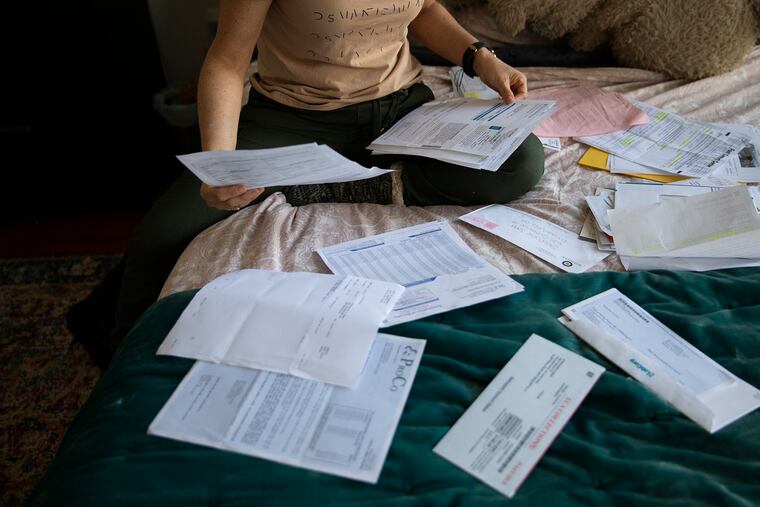Health-care costs a major burden, despite record low uninsured rates
A new study by the Commonwealth Fund found that 43% of working-age adults were underinsured, though many did have health insurance.

Uninsured rates have sunk to historic lows, but health-care costs remain a major financial burden for many who can’t afford to use the coverage they have, a nationwide health-care survey has found.
About 43% of working-age adults were “inadequately insured” in 2022, meaning they were uninsured, had a gap in coverage in the last year, or couldn’t afford care even with insurance, according to new research by the Commonwealth Fund, a health-care policy nonprofit.
» READ MORE: Inflation is hitting ACA health insurance plans in Pennsylvania
Those who struggled to afford care routinely delayed necessary appointments, skipped prescribed medication and amassed medical debt they couldn’t pay off.
“Having health insurance isn’t enough,” Sara Collins, a vice president at the Commonwealth Fund and the study’s lead author, said in a statement.
The biennial survey included a nationally representative sample of 8,022 adults reached online and by phone between late March and early July.
Affording health care is most challenging for people who do not have insurance to help offset the cost. The national uninsured rate reached an all-time low in early 2022, when about 8% of Americans were without insurance, the Department of Health and Human Services reported in August. (The Commonwealth Fund survey sample had a slightly higher uninsured rate of 9%.) Pennsylvania and New Jersey fare slightly better, with uninsured rates of 5.9% and 5.4%, respectively, in 2021, the most recent year for which local data are available, according to the Kaiser Family Foundation.
But the Commonwealth Fund survey found that a large portion of people with health insurance also can’t afford the care they need.
Among people who had insurance all year, 29% of those with employer coverage and 44% of those with marketplace/individual plans were underinsured.
» READ MORE: A bundle of joy, a pile of bills: Childbirth can cost thousands in out-of-pocket expenses
High deductibles, expensive insurance premiums, and rising health-care costs all strained people’s ability to maintain their health.
49% of survey respondents said they wouldn’t be able to afford an unexpected $1,000 medical bill. (The average deductible for an individual covered by an employer plan was $1,434 in 2021.)
46% had skipped or delayed care because of cost.
42% were struggling to pay off medical debt.
People who didn’t put off care — although they couldn’t afford it — later often faced difficult decisions about how to pay off the debt. Survey respondents said they drained their savings, opened new credit cards, and put off career or education plans to pay medical bills. Just more than a quarter said they weren’t able to afford necessities such as food, heat or rent because of their medical debt.
“The fact that so many people in this country cannot afford needed health care — even with coverage at a record high — points to the importance of addressing health care costs,” David Blumenthal, the organization’s president, said in a statement.
» READ MORE: What to know about how medical debt affects your credit rating